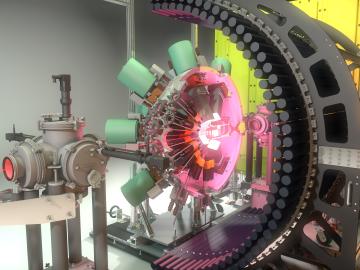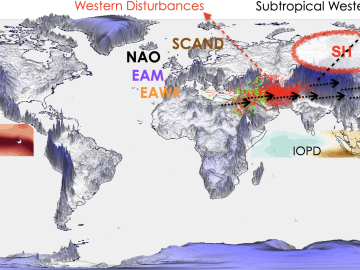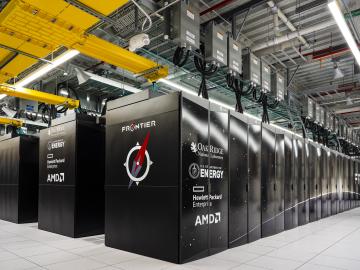
Filter News
Area of Research
News Topics
- (-) Cybersecurity (21)
- (-) Frontier (22)
- (-) Isotopes (26)
- (-) Molten Salt (8)
- (-) Physics (42)
- (-) Space Exploration (12)
- 3-D Printing/Advanced Manufacturing (68)
- Advanced Reactors (25)
- Artificial Intelligence (47)
- Big Data (29)
- Bioenergy (46)
- Biology (35)
- Biomedical (39)
- Biotechnology (9)
- Buildings (15)
- Chemical Sciences (29)
- Clean Water (13)
- Composites (12)
- Computer Science (111)
- Coronavirus (29)
- Critical Materials (9)
- Education (3)
- Emergency (1)
- Energy Storage (52)
- Environment (94)
- Exascale Computing (20)
- Fossil Energy (2)
- Fusion (31)
- Grid (31)
- High-Performance Computing (36)
- Hydropower (3)
- Irradiation (2)
- Machine Learning (28)
- Materials (61)
- Materials Science (83)
- Mathematics (4)
- Mercury (5)
- Microelectronics (2)
- Microscopy (25)
- Nanotechnology (39)
- National Security (23)
- Neutron Science (98)
- Nuclear Energy (79)
- Partnerships (24)
- Polymers (18)
- Quantum Computing (12)
- Quantum Science (36)
- Security (15)
- Simulation (29)
- Software (1)
- Summit (37)
- Transportation (52)
Media Contacts

Timothy Gray of ORNL led a study that may have revealed an unexpected change in the shape of an atomic nucleus. The surprise finding could affect our understanding of what holds nuclei together, how protons and neutrons interact and how elements form.

It was reading about current nuclear discoveries in textbooks that first made Ken Engle want to work at a national lab. It was seeing the real-world impact of the isotopes produced at ORNL

Eric Myers of ORNL has been named a senior member of the Institute of Electrical and Electronics Engineers, effective June 21.

Wildfires have shaped the environment for millennia, but they are increasing in frequency, range and intensity in response to a hotter climate. The phenomenon is being incorporated into high-resolution simulations of the Earth’s climate by scientists at the Department of Energy’s Oak Ridge National Laboratory, with a mission to better understand and predict environmental change.

As extreme weather devastates communities worldwide, scientists are using modeling and simulation to understand how climate change impacts the frequency and intensity of these events. Although long-term climate projections and models are important, they are less helpful for short-term prediction of extreme weather that may rapidly displace thousands of people or require emergency aid.

With the world’s first exascale supercomputer now fully open for scientific business, researchers can thank the early users who helped get the machine up to speed.

Tristen Mullins enjoys the hidden side of computers. As a signals processing engineer for ORNL, she tries to uncover information hidden in components used on the nation’s power grid — information that may be susceptible to cyberattacks.

To support the development of a revolutionary new open fan engine architecture for the future of flight, GE Aerospace has run simulations using the world’s fastest supercomputer capable of crunching data in excess of exascale speed, or more than a quintillion calculations per second.

Simulations performed on the Summit supercomputer at ORNL revealed new insights into the role of turbulence in mixing fluids and could open new possibilities for projecting climate change and studying fluid dynamics.

Innovations in artificial intelligence are rapidly shaping our world, from virtual assistants and chatbots to self-driving cars and automated manufacturing.


